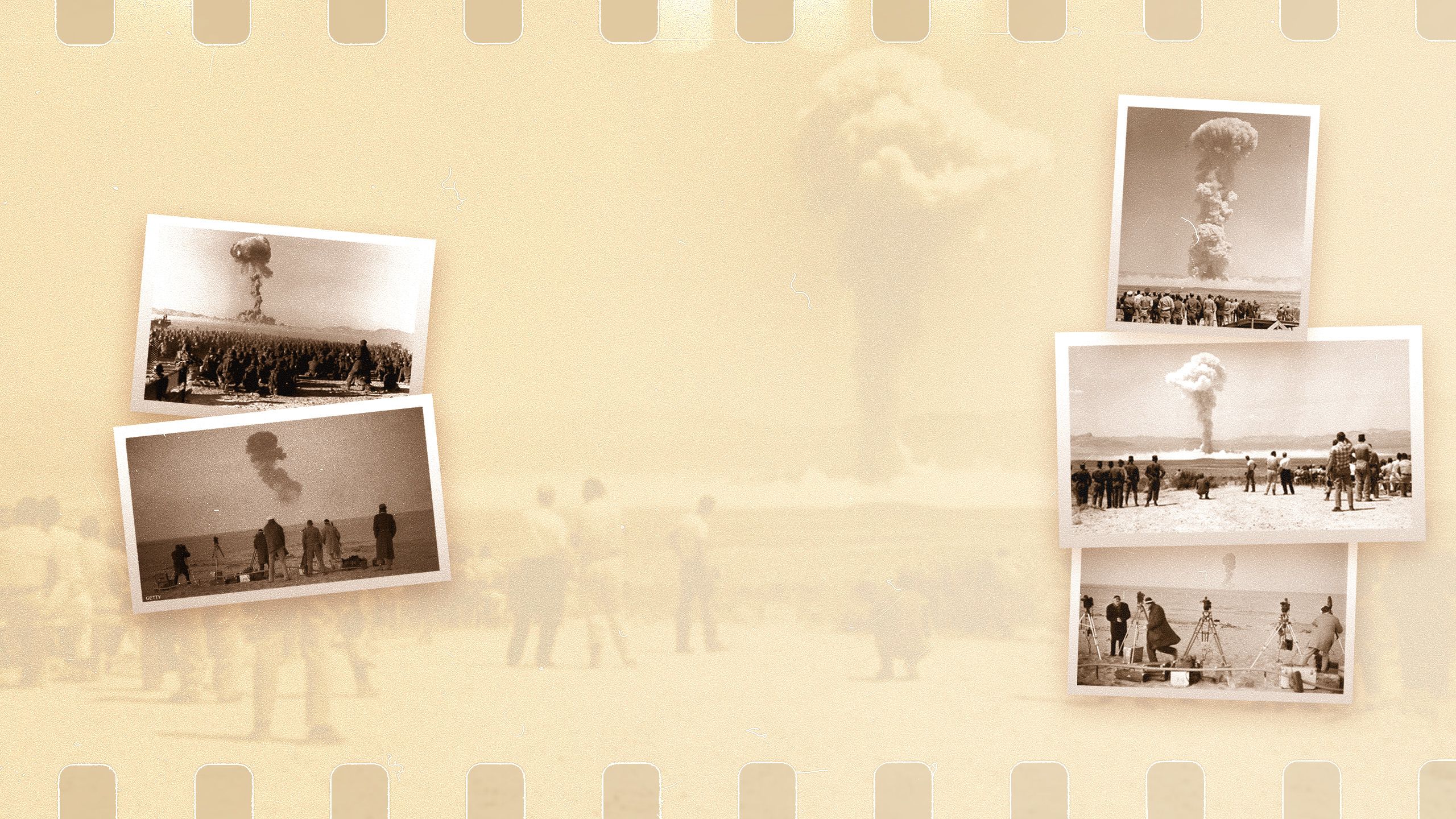date of publication :
Wednesday
02:27 2024-5-15
Last update :
Wednesday
02:32 2024-5-15
An unusual giant cloud was crossing the southern desert of Algeria, manipulated by the winds as they moved south and east.
The cloud crossed the Tamanrasset regions of Algeria, and crossed the border towards Libya.
A cloud carrying a huge mass of deadly dust, and destruction that will remain for a long time on Earth and space.
A major cloud called nuclear winter or mushrooms.
The cloud was the first thing the people of Algeria saw of a series of nuclear explosions carried out by the French occupation authorities, between 1960 and 1966.
The French carried out 4 experiments above ground and 13 underground, according to French officials, while historians and Algerian officials say that the number is greater and that their effects still threaten the health of the population and the environment of the region.
Every February, the Algerian authorities are determined to commemorate the tragic anniversary of the Blue Jerboa nuclear explosions.
Every year, Algeria requests details and maps of the crime from France, but France refuses.
Every winter, the state remembers its children who were victims of the criminal bombing, and demands compensation for loss of life or fatal diseases, and Paris maneuvers until Algeria forgets these demands.
“It was agreed to address the issue of memory, based on what the French side pledged to accelerate the process of returning the archives of the Liberation Revolution, to take care of the issue of nuclear test sites in the Algerian desert, and to cleanse them of radiation.”
That long-awaited statement was issued by the Algerian Ministry of Foreign Affairs in the last week of January 2023. The term “nuclear test sites” refers to a disaster that does not fade over the years and continues day and night, but it does not pledge to do justice to the victims, nor to hand over maps of nuclear waste.
In this report, we review the nuclear crimes committed by France against Algeria and its neighbors in the 1960s, and their catastrophic consequences on public health and the environment, especially since France has so far refused to reveal a map of the explosions, nor the possibility of the presence of nuclear waste buried in Algerian soil.

What happened in the Algerian desert one winter
France did not stop its deadly nuclear adventures even after Algeria gained independence
Just before dawn on a summer day in 1945, the United States began the nuclear age by experimentally detonating an atomic bomb in New Mexico.
Less than three weeks later, Washington struck Japan with two atomic bombs, marking the end of World War II in destruction and blood.
Within hours, the two bombs killed more than 220,000 citizens in the cities of Hiroshima and Nagasaki, and more than 200,000 people later died from deadly radiation doses.
In Paris, the rising French general Charles de Gaulle dreamed of leading his country into the nuclear age. His decision to enter the nuclear club came only two months after the Hiroshima and Nagasaki massacres.
From his point of view, the nuclear bomb is the only guarantor of Paris’s ability to remain independent in the midst of the ongoing cold war between Washington and Moscow.
This process included three stages between the years 1945-1960, and after it ended, France needed a large space in which it could test the final result of this weapon, which it had worked on for a decade and a half.
The war for Algerian independence has been ongoing since 1954.
French President Charles de Gaulle was keen to show the world that France was among the most powerful military elite countries in the world.
The choice fell on the Algerian desert.
Three years before the bombing, a French delegation visited the areas nominated for the first experiments, and concluded that the Tanzoft region in the south of the country was the most suitable to embrace this type of experiment.
France said at the United Nations podium that it chose the Algerian desert to carry out its nuclear tests. The area is deserted, barren, and uninhabited.
That was not true.
It was the most brutal day in the lives of the people of the South
On February 13, 1960, France conducted its first nuclear test near the Reggane Oasis in southern Algeria.
The first French atomic bomb was detonated in the Algerian desert, which was named after the blue jerboa after the blue color of the tricolor flag and a small desert animal of the desert. It released more than four times the energy that the American bomb dropped on Hiroshima.
France mobilized the media and cinema to announce the important news: the country officially joined America, the Soviet Union, and Britain, and became the fourth nuclear power on Earth.
3-minute video from Deutsche Welle: How did France conduct nuclear tests in Algeria?
A few months later, when Soviet leader Nikita Khrushchev was in France on an official visit, a second French bomb was detonated in the desert.
Between 1960 and 1966, four years after Algeria gained independence, France exploded 17 bombs in the desert, including four in mid-air near Reggane, which witnesses of the tests described as the most brutal things they had ever seen.
Then a French parliamentary report stated that four secret explosions in the Algerian desert “had not been accounted for,” the most famous of which was the Beryl incident, during which nine soldiers and a number of local Tuareg villagers were severely injured by radioactivity.
ظهرت في الأصل على alrai.com